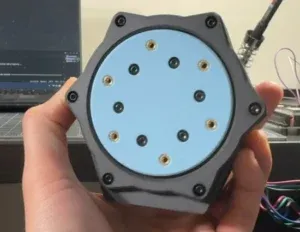In the world of modern engineering and manufacturing, precision is not just a preference — it’s a necessity. Every component, whether part of a gearbox, actuator, or mechanical assembly, must fit and function with exact accuracy. This is where the Dimension Tolerance Calculator becomes a crucial tool for engineers, designers, and quality inspectors striving to achieve optimal performance and compatibility in mechanical systems.
What Is a Dimension Tolerance Calculator?
A Dimension Tolerance Calculator is an online or software-based tool that helps determine the allowable variation in a part’s physical dimensions. In engineering, no manufactured part is perfectly accurate. Each part will have a small deviation from its intended measurement, known as tolerance. This calculator quantifies those deviations to ensure that even with manufacturing imperfections, parts still function as intended when assembled.
Tolerances are often expressed in millimeters or micrometers and help define the acceptable range between a component’s maximum material limit (MML) and least material limit (LML). The calculator simplifies this process by automatically computing these limits, saving time and eliminating manual calculation errors.
Why Dimensional Tolerances Matter in Engineering
Dimensional tolerances determine whether two mating parts can fit together correctly without interference or looseness. For example, in precision gearboxes, shafts, bearings, and housing units, even a small mismatch in dimensions can lead to noise, vibration, or early failure.
Without a proper tolerance analysis, you risk:
- Increased manufacturing rejections
- Assembly line inefficiencies
- Reduced lifespan of mechanical components
- Unpredictable performance or system failure
By using a Dimension Tolerance Calculator, designers can validate their design intent, ensure manufacturability, and maintain consistent quality throughout production.
Key Features of a Dimension Tolerance Calculator
A high-quality Dimension Tolerance Calculator, such as the one available on Me Virtuoso, provides multiple precision-driven features:
- Automatic Limit Calculations
It instantly calculates upper and lower dimensional limits based on nominal size and specified tolerances. - Tolerance Range Visualization
Users can visualize the permissible dimension range for better understanding of fit and clearance. - Support for Multiple Standards
The calculator typically supports ISO 286, ANSI, and DIN standards, ensuring compatibility with global manufacturing practices. - Fit Type Suggestions
It suggests whether the fit between two parts is clearance, transition, or interference — vital for assembly decision-making. - Ease of Use
With just a few inputs — nominal size, tolerance grade, and fit type — the calculator provides precise results instantly.
Applications of Dimension Tolerance Calculations
Tolerance calculation plays an essential role across several industries, including:
- Automotive Manufacturing
For gears, shafts, and engine parts where precise alignment affects performance. - Aerospace Engineering
High-precision tolerance ensures safety, reliability, and aerodynamic efficiency. - Robotics and Automation
Components like actuators, servo drives, and cycloidal gearboxes require exact tolerances to maintain motion accuracy. - Industrial Machinery
Dimensional compatibility in assemblies helps avoid downtime and ensures long-term stability. - 3D Printing and Prototyping
Designers rely on tolerance analysis to predict post-processing dimensional changes.
In all these fields, the Dimension Tolerance Calculator from Me Virtuoso becomes an indispensable companion for maintaining dimensional accuracy.
How to Use the Dimension Tolerance Calculator
Using a Dimension Tolerance Calculator is simple and intuitive. Here’s a quick guide:
- Enter the Nominal Dimension – Input the base measurement of the component, e.g., 50 mm.
- Select the Tolerance Grade – Choose from standard grades such as IT6, IT7, etc., depending on precision requirements.
- Choose the Fit Type – Whether you need a loose fit, tight fit, or transitional fit.
- Get Results Instantly – The calculator provides maximum and minimum limits along with clearances and interference values.
This straightforward process helps engineers validate their design decisions before prototyping or production, reducing costly revisions.
Advantages of Using the Dimension Tolerance Calculator
Implementing a tolerance calculator in your design process offers several benefits:
- Enhanced Accuracy: Eliminates human error in manual calculations.
- Time Efficiency: Quick computations speed up design and inspection processes.
- Consistency: Ensures standardization across teams and projects.
- Design Validation: Confirms part compatibility before manufacturing.
- Cost Savings: Prevents production defects and material wastage.
With tools like Me Virtuoso’s Dimension Tolerance Calculator, you can bridge the gap between design intent and manufacturing capability effortlessly.
Integrating Tolerance Calculation in Design Workflow
Integrating tolerance analysis into your CAD or design workflow strengthens product quality. Engineers can simulate fit conditions, identify risk areas, and modify dimensions early in the design stage. Many organizations now treat tolerance analysis as a core part of their Design for Manufacturability (DFM) process — ensuring every design is both functional and feasible.
By incorporating a Dimension Tolerance Calculator, designers gain immediate feedback on manufacturability, reducing trial-and-error and accelerating product development.
Why Choose Me Virtuoso’s Dimension Tolerance Calculator
At Me Virtuoso, precision engineering meets simplicity. The Dimension Tolerance Calculator is built for professionals who value accuracy and efficiency. Whether you’re a design engineer, quality inspector, or manufacturing specialist, this tool provides instant, reliable tolerance data that supports every stage of your design and production workflow.



